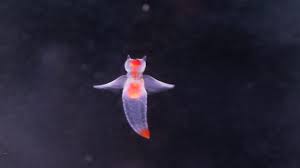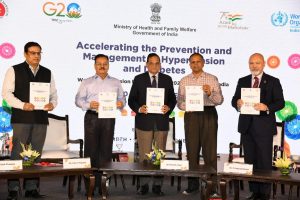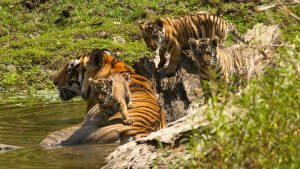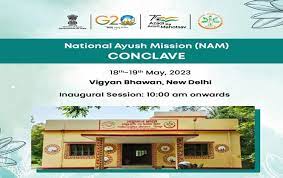Today’s Current Affairs: 19th May 2023 for UPSC IAS exams, State PSC exams, SSC CGL, State SSC, RRB, Railways, Banking Exam & IBPS, etc
Table of Contents
Sea Butterflies : Impact Of Climate Change

The population of the sea butterflies in the Southern Ocean is shrinking due to climate change, making them extremely vulnerable
- Sea butterflies, scientific name Thecosomata, are a suborder of sea snails known as shelled pteropods.
- They have muscular feet that allow them to swim in water instead of gliding on solid surfaces.
- Sea butterflies are holoplanktonic (organisms that pass their whole life floating, drifting, or swimming weakly in the water) and spend their entire life cycle in the water column.
- They are found in all oceans but are more diverse and abundant in colder waters.
- Sea butterflies have bilateral symmetry and a coiled or uncoiled shell of various shapes and sizes.
- Their shell is mostly transparent and very fragile and can be easily dissolved by ocean acidification.
- They have a pair of wing-like lobes or parapodia for propulsion and a head with eyes, tentacles, and a mouth with a long proboscis to capture prey.
- They have a reduced or absent gill and rely on their body surface for gas exchange.
- They are a major food source for many fish, seabirds, whales, and other marine animals.
- They also play a key role in transporting carbon from the surface to the deep ocean through their shells and fecal pellets.
75/25 Initiative : Union Health Ministry

In a significant move to combat the rising burden of non-communicable diseases (NCDs), the Union Health Ministry of India on unveiled the ambitious “75/25” initiative.
- The program aims to ensure that 75 million individuals suffering from hypertension and diabetes receive standardised care by 2025, primarily through Primary Health Centers (PHCs).
- Under the initiative, the government plans to train approximately 40,000 Primary Health Care Medical Officers on the Standard Treatment Workflow for NCDs. This training will be facilitated through the Shashakt Portal, enabling healthcare professionals to provide improved services at the community level.
- The initiative was announced at the G20 co-branded event “Accelerating the Prevention and Management of Hypertension and Diabetes”, organised by Union Health Ministry and WHO by Dr. V K Paul, Member (Health), NITI Aayog.
Mukhyamantri Sikho Kamao Yojana : Madhya Pradesh

The Madhya Pradesh state cabinet has given its approval to a new scheme called ‘Mukhyamantri Sikho Kamao Yojana’ (Chief Minister Learn and Earn Scheme), aimed at providing opportunities for unemployed youth in the state.
- Under the ‘Mukhyamantri Sikho Kamao Yojana,’ the government plans to offer training in around 700 different types of works across various sectors.
- These sectors include engineering, hotel management, tourism, travel, hospital services, ITI, software development, banking, insurance, accounting, chartered accountancy, financial services, industries, and MSME industry.
- Youth who have completed their 12th grade, ITI, graduation, or post-graduation are eligible to enroll in the scheme.
- Participants will receive a monthly stipend based on their educational qualifications.
- Those who have passed Class 12th will be given Rs 8000 per month, while ITI pass-outs will receive Rs 8,500 per month.
- Similarly, individuals with a diploma or higher degree will receive Rs 9,000 and Rs 10,000 per month, respectively.
IT Hardware PLI Scheme 2.0:

The Cabinet approved the Production Linked Incentive Scheme 2.0 for IT Hardware with a budgetary outlay of Rs 17,000 crore.
- Electronics manufacturing in India has witnessed consistent growth with a 17 per cent compound annual growth rate (CAGR) in the last 8 year
- PLI Scheme 2.0 is for IT hardware covers laptops, tablets, all-in-one PCs, servers and ultra-small form factor devices
- PLI Scheme Objective is to Scale up domestic manufacturing capability. Increase import substitution and Generate employment.
- Initial Targeted Industries was Mobile and allied Component Manufacturing, Electrical Component Manufacturing, and Medical Devices.
- Now expanded to—Automobile and auto components, Electronics and IT hardware, Telecom, Pharmaceuticals, Solar modules, Metals and mining, Textiles and apparel, White goods, Drones, Advanced chemistry cell batteries other sectors as well.
- Incentives Calculated based on incremental sales.
- Range from 1% to 20% depending on the industry.
- In some sectors such as advanced chemistry cell batteries, textile products and the drone industry, the incentive is on the basis of sales, performance and local value addition done over the period of five years.
Antimicrobial Resistance : WHO Report

The new WHO report highlights progress in addressing antimicrobial resistance (AMR) but also identifies gaps in ensuring a robust pipeline of antibiotic treatments.
- AMR refers to the ability of microorganisms, such as bacteria, viruses, fungi, and parasites, to resist the effects of antimicrobial drugs, such as antibiotics, antivirals, antifungals, and antiparasitic drugs. E.g., New Delhi metallo-β-lactamase (NDM-1) superbug
- AMR was responsible for nearly 5 million global deaths in 2019 and is projected to cause over 2mn death by 2050 in India alone. Yet the development of new antibiotics is limited, and access to existing treatments remains a challenge.
- The Report says AMR remains one of the top 10 global public health threats facing humanity
- 1 in 5 deaths caused by AMR occurred in children under the age of 5.
- If no action is taken, AMR could cost the world’s economy USD 100 trillion by 2050.
- Recommendations by the report: increased investments in research and development, alignment of financing mechanisms, and global efforts to ensure equitable access to antibiotics.
Nawegaon Nagzira Tiger Reserve : Birth Of Four Cub

A tigress has recently given birth to four cubs in the Navegaon Nagzira Tiger Reserve (NNTR) in Maharashtra’s Gondia district.
- Nawegaon Nagzira Tiger Reserve (NNTR) is situated in Gondia and Shandara Districts of Maharashtra.
- It was declared a Wildlife Sanctuary in 1970. In 2012, state government announced to merging this sanctuary with another national park to include in Tiger Project, now called as Nagzira Navegoan Tiger Reserve.
- It comprises Nawegaon National Park, Nawegaon Wildlife Sanctuary, Nagzira Wildlife Sanctuary, New Nagzira Wildlife Sanctuary and Koka Wildlife Sanctuary.
- It is connected with many surrounding tiger reserves like Pench, Kanha, Tadoba Andhari Tiger Reserve, Indravati Tiger Reserve etc.
- The topography is undulating, and the highest point viz. ‘Zenda Pahad’ is around 702 m above Mean Sea Level.
- There are 364 species of plants and the major trees are: Terminalia tomentosa, Lagerstroemia parviflora, Anogeisus lotifolia, Pterocarpus marsupium, Diospyrus melanoxylon, Ougeinia oogenesis etc.
- The major wild animals are: Tiger, Panther, Small Indian Civet, Palm Civet, Wolf, Jackal, Wild Dog, Sloth Bear, Ratel, Common Giant Flying Squirrel, Gaur, Sambar, Chital, Four Horned Antelope, Mouse Deer and Pangolin.
Two Days National Ayush Mission Conclave:

Ministry of Ayush is organising a two days National Ayush Mission Conclave in New Delhi.
- National Ayush Mission aims to enhance the availability, accessibility, and quality of Ayush healthcare services across the country through Ayush Health Wellness centers (AHWCs) as part of Ayushman Bharat scheme.
- Mandatory Components:
- AYUSH Services
- AYUSH Educational Institutions
- Quality Control of ASU &H Drugs
- Medicinal Plants
- Union Cabinet has approved the operationalization of 12,500 Ayush HWCs by upgrading existing Ayush Dispensaries / Health Sub-centre through State/UT Governments in Centrally Sponsored Scheme in a phased manner.
- It was launched in 2014 under Department of AYUSH, Ministry of Health and Family Welfare.
Next Director General Of International Organization For Migration:

Amy Pope elected next Director General of the International Organization for Migration
- International Organization For Migration: was Established in 1951.
- IOM is the leading intergovernmental organization in the field of migration and works closely with governmental, intergovernmental and non-governmental partners.
- IOM was granted Permanent Observer status to the UN General Assembly in 1992, and a cooperation agreement between IOM and the UN was signed in 1996.
- With 175 member states, a further 8 states holding observer status and offices in over 100 countries, IOM is dedicated to promoting humane and orderly migration for the benefit of all.
- It does so by providing services and advice to governments and migrants.
- India is a member of IOM.
- IOM works in the four broad areas of migration management:
- Migration and development
- Facilitating migration
- Regulating migration
- Forced migration.
Nutrient Based Subsidy (NBS) Scheme:

The Union Cabinet has approved the proposal of the Department of Fertilizers for revision in Nutrient Based Subsidy (NBS) rates for various nutrients for Rabi Season and Kharif Season 2023.
- Nutrient Based Subsidy (NBS) rates has been confirmed for various nutrients i.e. Nitrogen (N), Phosphorus (P),Potash (K) and Sulphur (S) for Rabi Season 2022-23 and for Kharif Season, 2023 for Phosphatic and Potassic (P&K) fertilizers.
Nutrient Based Subsidy Scheme: - The Subsidy on P&K fertilizers is governed by NBS Scheme under the Department of Fertilizers since 2010.
- Subsidy is fixed by an inter-ministerial committee taking into account the benchmark international prices of finished fertilisers as well as raw materials.
- The subsidy is given to registered to P & K fertiliser manufacturers/importers which provides these fertilisers at subsidised rates to farmers.




